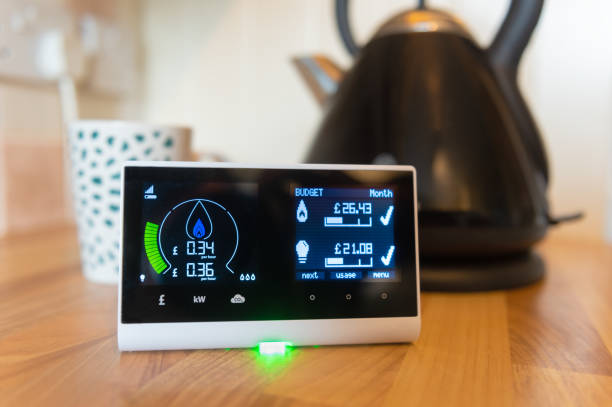
Smart Meters: How can they help you monitor your energy consumption?
Smart meters are a new initiative by the government in collaboration with energy suppliers. The goal is to provide each household with the latest smart devices. The British government is also trying to reduce the country’s carbon footprint.
Smart meters can display the actual and real-time consumption of electricity. This allows the consumer to be aware of their solar energy use and take action to reduce it. The rollout date was delayed due to technical problems with smart meters.
Some of these issues were related to households with smart meters and connected solar panels. This is the right time to consider solar panels for your home. The good news is that most of the problems with smart meters (SMETS2) have been fixed.
What are Smart Meters?
Smart meters are essentially an upgrade to old gas and electricity meters. According to the government rollout, all households should have one by 2020. Smart meters can automatically send your energy supplier your actual energy consumption in real-time. The new technology also ends the need to estimate your energy bills.
Smart meters will soon be able to connect with an electronic device called Home Display. This displays the consumption of electricity and gas in pounds and pence. This device offers consumers the possibility of displaying different options to reduce their energy consumption and lower their bills.
Smart Meters with Gas and Electric Boilers
Smart meters can also be fitted with your smartphone. Gas boilers And Electric boilers. However, you should be aware that there are two types of smart meters: smart gas metering (GSM) and smart electric metering (ESME). What is the difference between Smart Meters of the First and Second Generation?
Although the first wave smart meter installation was done with first-generation smart meter devices, many issues have been. The most common problem was that the smart meters could become ‘dumb’ or stop recording when the consumer changes suppliers.
The majority of first-generation smart meters used 3G mobile internet. The problem with the older devices was that they didn’t have a single network to manage them. Therefore, the smart meters could not switch suppliers and became ‘dumb’.
The smart meter would no longer send automatic readings to new energy suppliers and instead request manual readings. The government set a deadline for smart meter deployment, and companies developed the second generation smart meters (SMETS 2)
These new devices are an improved version of their predecessors, and many of the problems were resolved. The second-generation devices were launched in 2018. A special network (WAN – Wide Area Network) was created to allow all suppliers to manage them.
Are Energy Suppliers Using Smart Meters?
The smart meters can be used with solar panels and another photovoltaic systems. The meters allow consumers to see how much electricity they use from their solar panels and how much they are buying from the grid. The same applies to solar energy exported back to the grid.
There are still energy providers who haven’t set up systems to detect the energy generated by solar panels or other renewable installations. E.On is one such example. E. One example is a company with smart meters that can be used with solar panels.
How do smart meters work?
Smart meters are smart because they can communicate with other devices and send energy information directly to your supplier. The Wide Area Network was designed to allow smart meters to communicate properly.
It allows smart meters to exchange data with other meters. In most cases, this is the Data Communications Company. This company was created by the British government exclusively for this purpose. The DCC will collect the data from smart meters and forward it to the appropriate energy supplier.
Smart meters can either be installed simultaneously as the solar panel installation or later.
